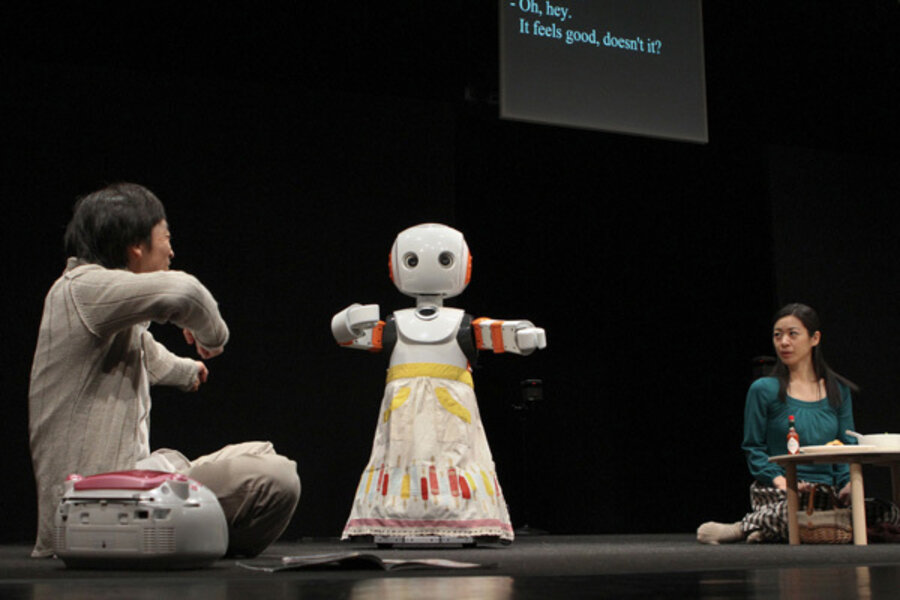RoboTheater: Japanese robot actors take the stage
Loading...
| NEW YORK
A dying girl pressed a humanoid robot's hand to her face as the robot began reciting poetry.
This scene was acted out by a human actress and an android during a North American tour of the Japanese Robot Theater Project.
The robot theater based at Osaka University first came to life four years ago when a playwright teamed up with a robotics researcher at Osaka University in Japan. They created stories in which robots are personal companions and household servants. Stories like "Sayonara" and "I, Worker" became part of the double-bill stage production presented at the Japan Society in New York from Feb. 7 p.m. to 9 p.m.
"One of the most common questions we get is whether the robots think," said Oriza Hirata, playwright and director of the Seinendan Theater Company in Tokyo, showing flashes of humor through a translator. "They don't think. Neither do the actors."
The robots included a "Gemnoid F" android that looks like a lifelike Japanese woman, as well as two "Robovie R3" models that looked more like oversized robot toys. The machines performed their prerecorded scripts alongside human actors from the Seinendan Theater Company.
Robot-centric productions
"Sayonara" featured the Gemnoid F android acting as a poetry-reciting companion to a blonde girl suffering from a terminal condition. The android's humanlike appearance included blinking eyes, mouth movements and several facial expressions.
Despite Gemnoid F's acting limitations, audiences often interpreted the android's performance as conveying a much broader emotional range, said Bryerly Long, a multilingual actor with the Seinendan Theater Company, during a Q&A session. She did the voice acting for the android and played the dying blonde girl.
An extended scene for "Sayonara" included a melancholy nod to the Fukushima Daiichi nuclear disaster that followed in the wake of the 2011 Japanese earthquake and tsunami. Hirata, the playwright, took inspiration for the scene from news reports describing how robots could help in the radioactive zone surrounding the nuclear plant meltdown.
The second play, "I, Worker," featured the Robovie robots as household servants. The machines work in a home in which a young Japanese couple struggles with the loss of a child and the husband's unemployment. In a parallel twist, one of the robots also begins suffering from a lack of will to do its daily chores.
Unlike Gemnoid F, the Robovie robots used artificial voices, not a human voice. The android in the first play required a more humanlike voice, said Hiroshi Ishiguro, a robotics researcher at Osaka University and creator of the robot performers. It would otherwise run the risk of creeping audiences out with the mismatched synthetic voice and humanlike appearance,
"It would be uncanny," Ishiguro explained. He was referring to the so-called "uncanny valley" phenomenon experienced when people see a mismatch between human and non-human characteristics in robots or digital animations.
Robots and humans acted together in harmony for this particular performance. But Hirata suggested that robot actors could begin replacing human actors within the next few decades.







